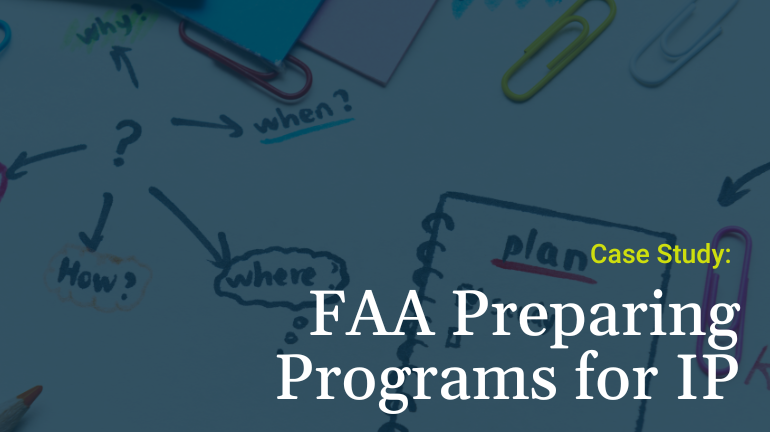Restoring Compliance Confidence
FAA Secures Drone Data with Security Audit

Background
The Federal Aviation Administration (FAA) needed to validate security compliance among private-sector partners participating in a groundbreaking UAS (Unmanned Aircraft Systems) initiative. Following findings from the Office of Inspector General (OIG), it became urgent to implement a reliable audit framework to protect sensitive information and reinforce program integrity.

The Challenge
Prior attempts to establish an audit system fell short:
- Allowing suppliers to select their own auditors led to inconsistent methods and zero completed audits.
- Hiring a third-party audit firm delivered low-quality, unclear results—forcing contract termination and further undermining program confidence.
Without a standardized, authoritative verification process, the FAA was unable to identify risks, confirm compliance, or assure stakeholders. Program personnel faced increasing pressure from oversight bodies and were forced to divert attention from core aviation safety functions—creating inefficiencies, delays, and internal frustration.

The Approach
Evans introduced a Security Assessment Framework built specifically for the FAA’s operational environment. This system was engineered for speed, accuracy, and adaptability — providing transparent, actionable insights across a diverse network of industry partners.
Key Implementation Highlights:
- Built a Dedicated Internal Audit Team: Clearly defined roles, security expertise, and quality oversight.
- Developed a Standardized Methodology: Repeatable, transparent audit protocol with unambiguous deliverables.
- Expanded the Scope: Went beyond basic verification to assess systemic compliance and potential vulnerabilities.
- Executed a Strategic Pilot: Validated the process with a representative set of suppliers before expanding system-wide.
- Streamlined Execution: Partnered with the FAA’s technical contractors to ensure alignment and clarity throughout rollout.
Evans also established consistent coordination mechanisms—ensuring stakeholder alignment, seamless data exchange, and real-time adjustment to field feedback.

The Results
Evans’ approach replaced uncertainty with confidence, yielding rapid, measurable results:
- Stabilized Program Operations: Reestablished credibility and freed internal teams to focus on aviation oversight and mission delivery.
- Resolved 34 Compliance Violations: Uncovered and remediated previously undetected Memorandum of Agreement breaches.
- Achieved Zero Inconsistencies: Standardized assessments eliminated ambiguity and subjective variance.
- Delivered 100% Partner Visibility: Provided complete insight into industry partner compliance posture—enabling proactive risk mitigation.
- Compressed Timelines: Increased assessment depth while reducing cycle times, maintaining operational momentum.

The Tradeoff of Not Acting
Without Evans, the FAA would have remained vulnerable to:
- Ongoing Regulatory Gaps: Prolonged noncompliance with oversight mandates and increased risk of sanctions or delays.
- Operational Insecurity: Unverified third-party practices leaving sensitive data open to compromise.
- Administrative Gridlock: Delays or suspension of program activity due to audit backlog and verification uncertainty.
- Loss of Stakeholder Confidence: Industry partners and oversight entities losing confidence in the program’s governance.
- Stalled Innovation: Resources diverted to audit remediation rather than advancing UAS modernization and mission goals.
By restoring a trusted, repeatable compliance process, the FAA not only addressed immediate audit gaps—but also laid the groundwork for long-term innovation in the national airspace system. With verified partner compliance and reduced administrative burden, agency leaders were able to refocus on advancing UAS integration, enhancing safety protocols, and accelerating modernization goals outlined in the FAA’s NextGen initiative. The strengthened oversight infrastructure ensures that as emerging drone technologies scale, they do so with the operational integrity and data security essential to national mission continuity.





